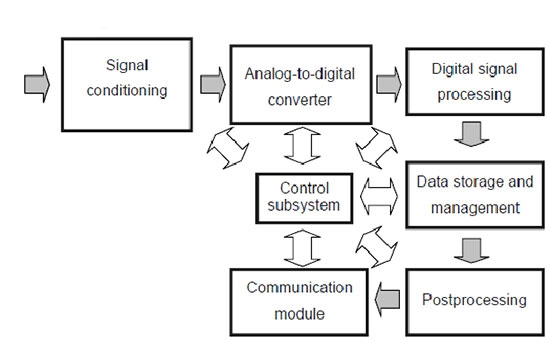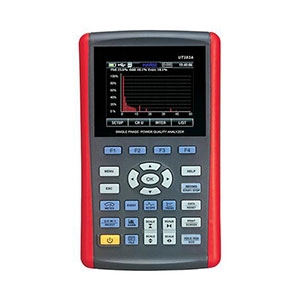A power quality analyzer is a device used to monitor and analyze the power quality in power systems. In modern industrial and commercial environments, the stability and quality of power supply are critical to ensuring the normal operation of equipment and improving production efficiency. Power quality analyzers monitor and analyze parameters such as voltage, current, frequency, harmonics, etc. in the power system in real time, helping users understand the power quality status, identify potential problems in a timely manner, and take appropriate measures to ensure the stable operation of the power system. This article sisco.com will briefly introduce the functions, operating principle, classifications and applications of them to help users have a better understanding of power quality analyzer.
Power Quality Analyzer Functions
The core function of the power quality analyzer is that it can fully and accurately reflect the power quality status of the power system. This includes voltage fluctuations, voltage flicker, voltage unbalance, harmonic distortion, interruptions, sags and other power quality problems. Through real-time monitoring and analysis of these parameters, users can understand the operating status of the power system, discover and solve potential power quality problems in a timely manner, thereby ensuring the normal operation of equipment and improving production efficiency.
In addition to real-time monitoring and analysis functions, the power quality analyzer also has the functions of data storage and report generation. Users can save the monitoring data in the internal or external memory of the device to facilitate subsequent data analysis and processing. At the same time, the power quality analyzer can also generate detailed reports, including statistical data, waveforms, spectrum diagrams, etc. of power quality parameters, providing users with a comprehensive basis for power quality assessment.
Working Principle of Power Quality Analyzer
The power quality analyzer collects signals from the power system in real time through voltage and current sensors, and extracts key parameters such as voltage, current, frequency, and harmonics through analog-to-digital conversion and digital signal processor (DSP). The processing process includes Fourier transform (FFT) for analyzing harmonic components, filtering to remove noise, root mean square value (RMS ) calculation of effective value, and transient analysis to capture instantaneous changes in voltage or current.
The analyzer then uses the processed data to calculate various indicators of power quality, such as voltage deviation, frequency stability, harmonic distortion, voltage imbalance, etc. The data can be visualized through the display screen, PC software or cloud platform, and an alarm is triggered when the parameters exceed the set range. The device supports real-time monitoring and long-term recording, providing a reliable basis for the maintenance and optimization of the power system.
Classification of Power Quality Analyzer
- Classification by installation method
- Portable power quality analyzer: suitable for short-term field testing, lightweight and flexible, easy to carry and use, often used to troubleshoot temporary faults or instability problems in the power system.
- Fixed power quality analyzer: installed in the power distribution system for long-term monitoring and data recording. Suitable for occasions where continuous monitoring of power quality is required, such as industrial facilities, substations and public distribution networks.
- Classification by function
- Basic power quality analyzer: It can measure basic power parameters such as voltage, current, frequency, etc. It is suitable for environments where power quality requirements are not high.
- Multifunctional power quality analyzer: It has more functions and can monitor harmonics, flicker, voltage unbalance, power factor, transient events, etc. It is suitable for environments with more complex power quality management.
- Harmonic analyzer: Specially used to detect and analyze harmonics in the power grid, helping users evaluate the impact of harmonics in the power system on equipment and systems.

- Classification by monitoring content
- Harmonic analyzer: Focuses on detecting harmonic distortion in the power system, analyzing harmonic sources and their impact on power quality.
- Three-phase power quality analyzer: specially used for three-phase power system, capable of monitoring the imbalance and harmonic distortion of three-phase voltage and current .
- Transient analyzer: Used to capture voltage transient changes, such as surges, momentary power outages, etc. These transient phenomena may cause damage or impact on power equipment.
- Classification by field of use
- Industrial power quality analyzer: used in industrial environments to analyze power quality issues in power systems, such as harmonic distortion, voltage fluctuation, frequency drift, etc., to help companies improve the efficiency and safety of power systems.
- Power quality analyzer for public power grid: Applicable to public power distribution network, used by power companies to monitor the entire power grid, ensure that the power quality meets the standards, and guarantee the power supply quality for power users.
- Classification by real-time monitoring capability
- Real-time monitoring analyzer: It has real-time online monitoring function, can continuously collect and analyze power quality data, and is suitable for scenarios that require all-weather monitoring of the power system.
- Sampling analyzer: It collects data at regular intervals for analysis and is suitable for situations where real-time monitoring is not required.
Application of Power Quality Analyzer
In practical applications, power quality analysers are widely used in various fields such as industry, commerce, medical treatment, and transportation. For example, in the industrial field, power quality analyzers can be used to monitor and analyze the power quality on the production line, detect equipment failures in a timely manner, and ensure the stable operation of the production line. In the commercial field, power quality analyzers can be used to monitor the power quality of public places such as shopping malls and hotels to ensure the comfort and satisfaction of customers. In the medical field, power quality analyzers can be used to monitor the power quality of medical equipment to ensure the normal operation of medical equipment and the safety of patients. In the transportation field, power quality analyzers can be used to monitor the power quality of transportation facilities such as railways and subways to ensure the safety and stable operation of transportation facilities.
Power quality analyzer is an important power monitoring device. It helps users understand the power quality status and find potential problems in time by real-time monitoring and analysis of power quality parameters in the power system, so as to take corresponding measures to ensure the stable operation of the power system. With the continuous development of power technology and the continuous improvement of people's requirements for power quality, the application scope of power quality analyzer will continue to expand, and its role in ensuring the stable operation of the power system and improving production efficiency will become more prominent. Feel free to learn more about power meters and power analyzers from SISCO.

